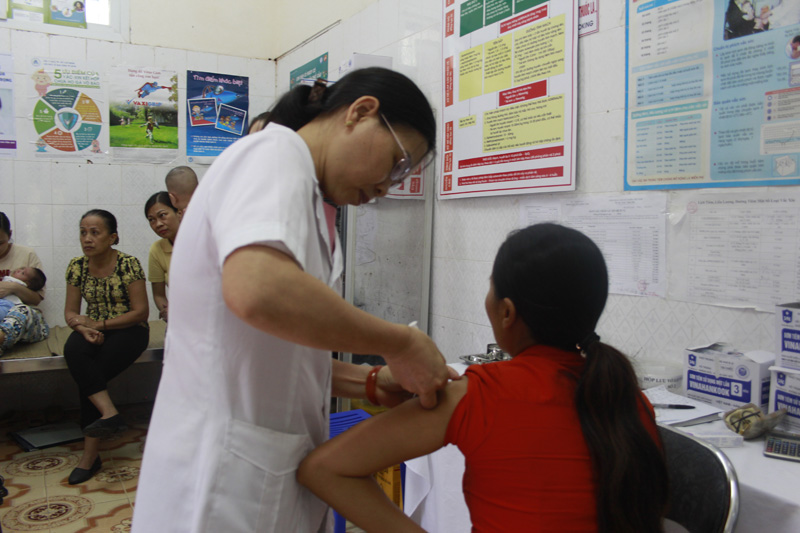
(HBO) - Rabies is a dangerous infectious disease in animals subject to epidemic declaration and also in the list of animal-human transmission diseases. In 2017, no rabies-related deaths were reported. However, in the first five months of this year, there were four deaths in the districts of Ky Son, Luong Son, Cao Phong and Da Bac.
After a dog bite, Bui Thi Hien from Hien Luong
commune (Da Bac) took a vaccination against rabies at the provincial preventive
medicine centre.
The number of people who received
rabies preventive treatment since the beginning of the year has so far reached
94, an increase of more than 15 percent over the same period in 2017. All the
four dead patients, three of them under 15 years old, did not receive preventive
treatment after being bitten.
The main source of rabies
transmission is dogs not vaccinated against rabies. Unvaccinated dogs affect
the immunity of the whole dog community, which will facilitate the spread of the
virus and hence transmit to human and other domestic animals. Human often catch
rabies from pet dogs, and those who are bitten by rabies-infected dogs will die
if they don’t seek preventive treatment from health care facilities. Therefore,
giving dogs and cats shots against rabies is the most important solution.
Luong Thanh Hai, Director of the
Animal Husbandry and Veterinary Medicine Department, said that in 2017 and the
first five months of 2018, the rate of rabies vaccination for dogs and cats in
the province remained low. In 2017, it was 78.2 percent while the first five
months was only 66.9 percent. Localities with low vaccination rates in 2017 included
Mai Chau with 24.3 percent, Da Bac 32.8 percent, Luong Son 54.8 percent, and
Yen Thuy 72 percent.
Analysis by the provincial Steering
Committee for Epidemic Prevention and Control concluded that the main reason
behind the situation is the poor performance in the management of dogs in many
localities in the province, especially in listing pet dogs, thus leaving them wander
without control and bite people, especially in rural and remote areas./.
The Department of Education and Training of Hoa Binh province held a conference on March 18 to review the performance of the "Safe and Happy School" Project and set out tasks for 2025. The project, funded by the Taiwan Fund for Children and Families (TFCF), aims to create a safe, inclusive, and supportive learning environment for students. The event saw the attendance of representatives from the TFCF and 26 beneficiary schools.
With over 70% of their workers being women, trade unions across industrial parks (IPs) in Hoa Binh have been actively safeguarding their legal rights and interests while implementing initiatives to improve their income and well-being.
In recent years, the Hoa Binh provincial General Hospital has continuously innovated itself and improved the quality of medical services to meet the increasing needs of local people. With substantial investments in infrastructure and modern equipment, along with a team of highly qualified doctors and nurses, the hospital has gradually established itself as one of the leading medical units in the Northwestern region and a trusted destination for healthcare for people inside and outside the province.
From mastering the fundamentals of programming to achieving national recognition, the Programming Club of the Le Van Tam Primary School (STAR LVT28) in Hoa Binh city has made remarkable strides in the field of robotics.
The Ho Chi Minh Communist Youth Union Committee and the Vietnam Youth Federation chapter of Hoa Binh province organised a programme on March 12 to launch the "Digital Literacy" movement and an online quiz on the resolutions of the Vietnam Youth Federation congresses at all levels, as well as the Politburo's Resolution No. 57-NQ/TW on breakthroughs in the development of science, technology, innovation, and national digital transformation.
As climate change grows more unpredictable, the development of production forests has become essential - not just for economic growth, but for safeguarding the environment and maintaining ecosystem balance. By boosting local incomes, curbing natural disasters, preventing soil erosion, and protecting water resources, these forests play a crucial role in sustainable development.



